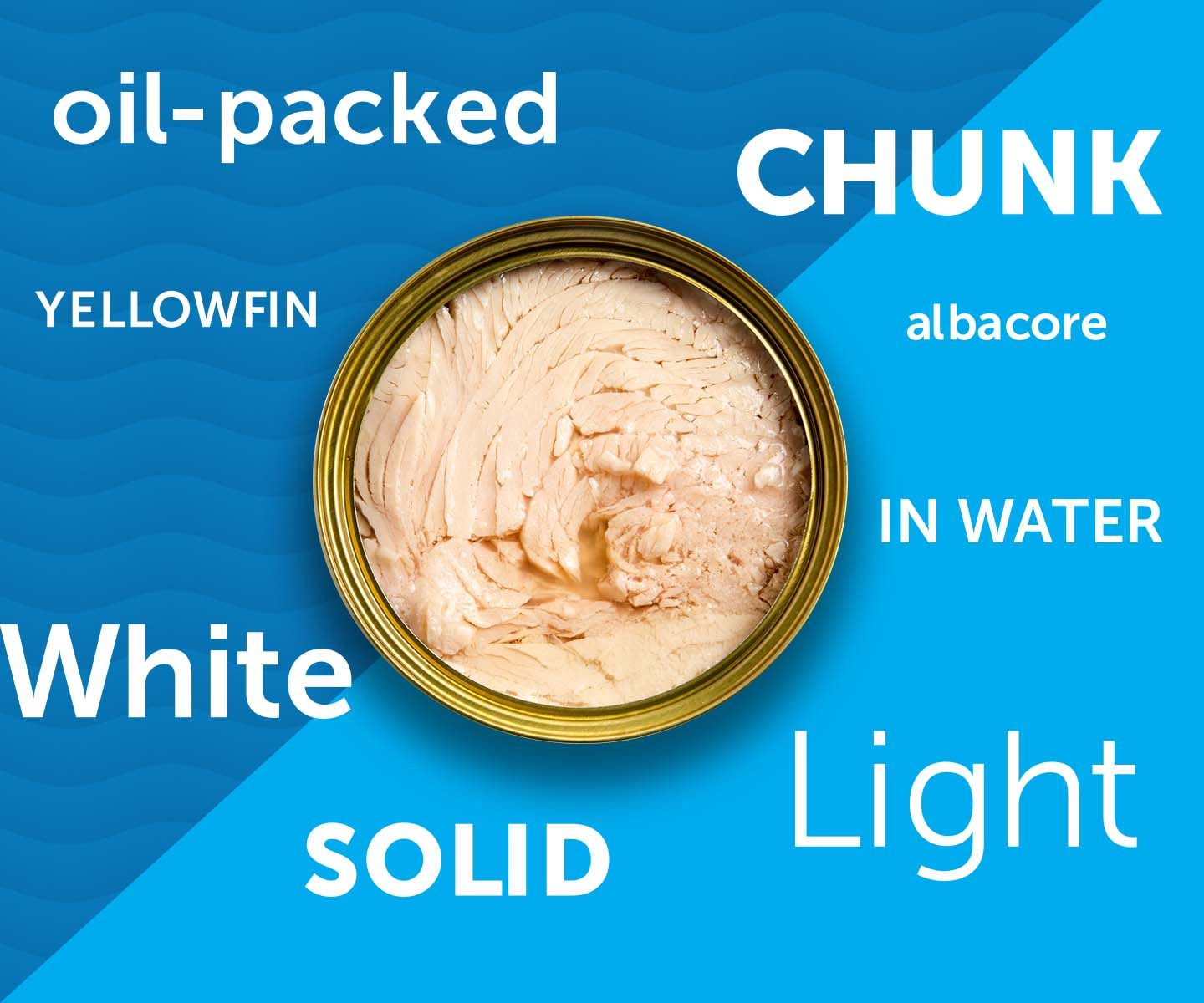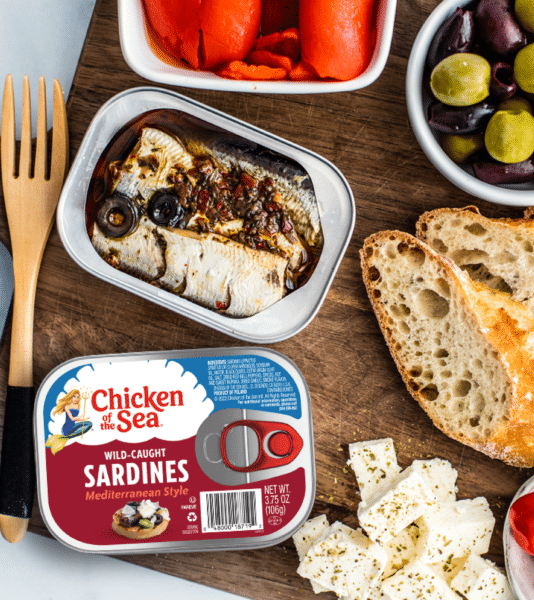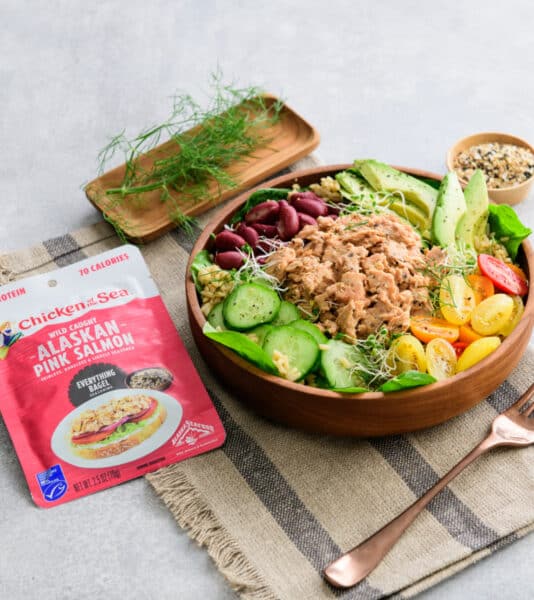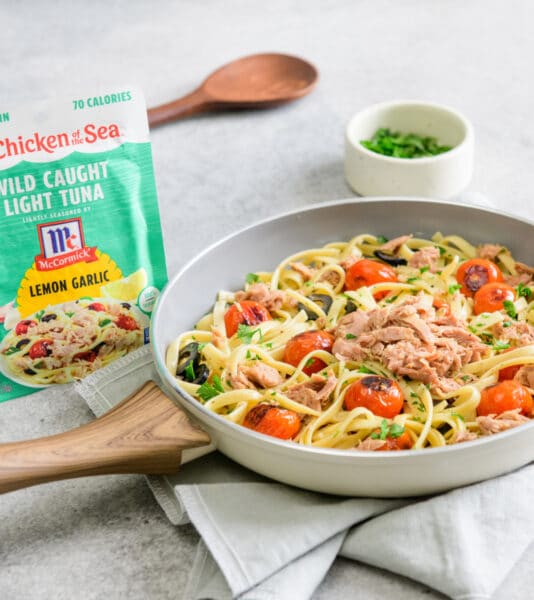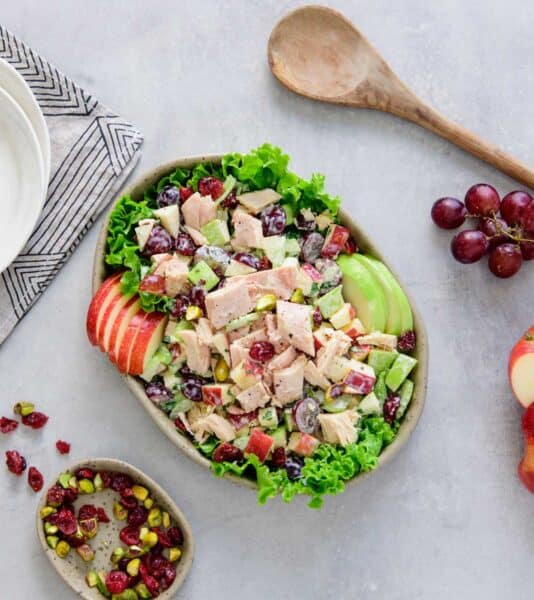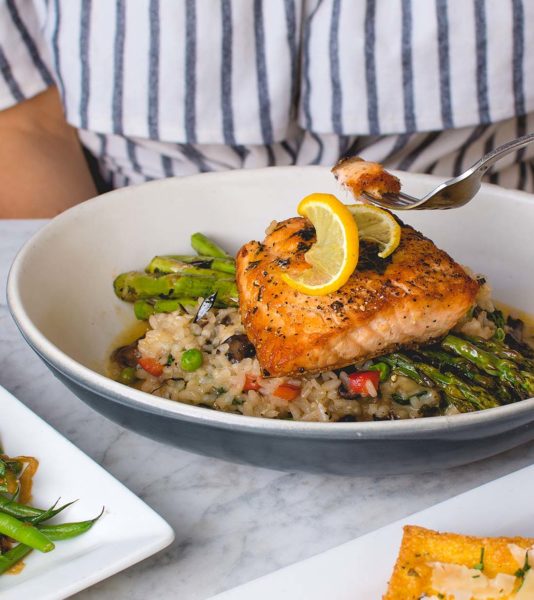If you’ve ever done a deep dive into the canned tuna selection at your local grocery store, you know there are a ton of options that don’t sound all that different. Chunk light, solid white, oil-packed—does it really make a difference? Isn’t it all just tuna?
Yes and no. Tuna is tuna, of course, but all of those terms mean specific things. It really boils down to three choices: White or light, chunk or solid, and water- or oil-packed. Whether you’re making keto tuna salad or just started a pescatarian diet, it’s good to know the differences between types of tuna.
What Are the Differences Between White and Light Tuna?
Believe it or not, this part of the label actually tells you what species of fish you’re eating. “White” tuna is 100% albacore (Thunnus alalunga). “Light” tuna is either yellowfin (Thunnus albacares), skipjack (Katsuwonus pelamis), Bigeye (Thunnus obesus) or a combination of the three. These species have slightly different flavors, textures, and nutritional value, so it helps to know which is which.
You can see the difference between white and light tuna by cracking open a couple cans. Albacore tuna is noticeably white compared to light tuna species such as yellowfin and skipjack, which are somewhere between tan and pink. But the colors aren’t the only difference—they have distinct flavors, too. Albacore is firm and meaty, with a light, mild flavor. Yellowfin and skipjack are a bit softer and have a richer, more intense taste. The choice comes down to personal preference: If you like a less “fishy” tuna experience, go for white tuna; if you want stronger flavor, light tuna is a better choice.
| White Tuna | Light Tuna | |
|---|---|---|
| Species | Albacore | Yellowfin and/or Skipjack |
| Color | White | Tan to pink |
| Texture | Firm and meaty | Softer |
| Flavor | Light and mild | Richer and more intense |
| Nutrition | Slightly higher in fat and calories; more omega-3 fatty acids | Lower in fat and calories; slightly fewer omega-3 fatty acids |
Nutritionally, all three of these fish are pretty similar. All types of tuna are high in protein and feature omega-3 fatty acids, yet low in saturated fat and calories. However, albacore does have slightly more fat and calories than skipjack or yellowfin—which means it has more omega-3 fatty acids. It’s not a huge difference (chunk white tuna has about half a gram more fat per serving than chunk light tuna), but if you’re serious about your omega-3s, you may benefit from choosing white tuna over light. If you’re serious about counting calories, you can read this post about a can of tuna calories.
What’s the Difference Between Chunk and Solid Tuna?
Once you’ve figured out if you want white or light tuna, you get to decide between chunk and solid. This refers to the size of the pieces of fish inside the can: Chunk tuna is broken up before canning, while solid tuna is packed in large, intact filets. Simple enough.
When developing chunk and solid products, certain species lend themselves better to each style because of the size of the fish itself. Yellowfin and albacore species tend to be larger, making it easier to pack them into solid filets. Skipjack tuna are usually smaller, which is why they are more commonly used in chunk-style tuna.
| Chunk Tuna | Solid Tuna | |
|---|---|---|
| Definition | Broken into small flakes before canning | Packed as large, intact filets |
| Fish Size Connection | Suitable for smaller pieces of fish | Requires larger sections of fish |
| Why No “Solid Light”? | Smaller fish species like skipjack make it impractical | Larger fish like albacore are better suited for solid filets |
| Fish Size Details | Skipjack (3 ft, ~70 lbs) | Yellowfin (up to 7 ft, >400 lbs); Albacore (~4.5 ft, ~125 lbs) |
All of these fish are precooked before canning, which makes the meat fragile. If you’re working with one large species of fish, it’s easy to find whole filets big enough to fill a can. But if you’re working with a mixture of huge yellowfin and tiny skipjack, which is most light tuna, the bigger fish has to get cut down to match the smaller one so the mixture stays consistent.
Which is Better, Water or Oil-Packed Tuna?
The final choice you get to make in your tuna shopping adventure is between oil- and water-packed. This one does just what it says on the tin: Oil-packed tuna contains either vegetable or olive oil, while water-packed tuna contains water. Do you prefer a lighter texture with fewer calories and less fat? Then water-packed is for you. If you’re looking for the richest, most luxurious tuna salad of your life, then you’ll probably want oil-packed.
| Oil-Packed Tuna | Water-Packed Tuna | |
|---|---|---|
| Texture | Richer, more luxurious | Lighter |
| Calories & Fat | Higher in calories and fat | Lower in calories and fat |
| Best Use | Ideal for indulgent dishes like luxurious tuna salad | Suited for lighter meals or calorie-conscious choices |
The cool thing about canned tuna is its versatility: White or light, chunk or solid, oil- or water-packed, any variety will work just fine in any recipe that calls for canned tuna. But by narrowing down your options based on your own preferences, you get to control the specific flavor and texture of a finished dish.
Frequently Asked Questions
How to choose canned tuna?
Decide between white or light tuna based on your flavor preference—white is mild, while light is richer. Then, choose between oil- or water-packed depending on texture and calorie concerns, and pick chunk or solid for preferred fish piece size.
What is the best canned tuna to buy?
The best canned tuna depends on your needs. For a luxurious dish, solid, oil-packed white tuna is ideal; for lighter meals, chunk light tuna packed in water is better.
How can you tell good quality tuna?
High-quality canned tuna has intact, firm pieces of fish with a fresh smell. Avoid cans with a metallic odor or mushy texture, as these indicate lower quality.
Which tuna is better, albacore or chunk light?
Albacore has a firm texture and mild flavor, while chunk light offers a softer texture and bolder taste. If you prefer less “fishy” flavors, go with albacore; for stronger flavor, chunk light is better.
What is the difference between albacore and ahi tuna?
Albacore is a type of tuna found in cans, known for its mild flavor and firm texture. Ahi tuna, typically yellowfin, is often used fresh in sushi or steaks and has a richer flavor profile.
What tuna tastes the least fishy?
White tuna, particularly albacore, has the mildest flavor and is ideal for those seeking a less “fishy” taste. Light tuna, especially skipjack, tends to have a stronger flavor.

Where to Buy
Overflowing with flavor, Chicken of the Sea tuna is ready for all your culinary adventures. Use our product locator to find the perfect can of tuna from Chicken of the Sea.
